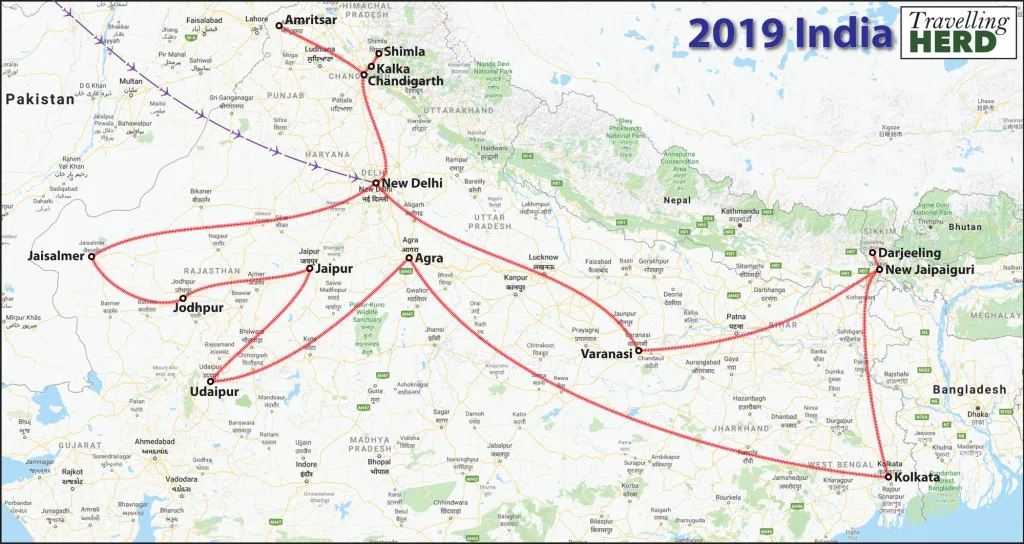Thursday 4th April 2019 – Morning
We had secured a guide the day before to show us round the Golden Temple and the very knowledgeable, polite and solicitous Mr Singh met us in the hotel lobby at 10:00. Turning left out of the hotel we soon saw a different side to Amritsar.
The streets opened out and we passed the statue of last king of Punjab, Maharajah Ranjit Singh, also known as the Lion of Punjab who provided the gold to bedeck the Golden Temple. We also passed the Partition Museum, housed in part of the imposing red-brick Town Hall building, and originally the headquarters of General Dyer [more about him in the next post]. Other parts of the Town Hall are being renovated in an on-going programme of restoration. The museum was opened in August 2017 and is intended to document the post-partition riots following the British withdrawal and the creation of Pakistan and India.
On our way to the Golden Temple, Mr Singh pointed out a vegetarian McDonalds which, situated in close proximity to this holiest of shrines for Sikhs, does not serve any meat. It is in fact, the first ever vegetarian McDonalds in the world.
Before entering the Golden Temple, as a mark of respect, you have to take off your shoes, cover your head and wash your hands and feet. Squares of cloth are provided for those who have nothing to cover their heads with and Mr Singh selected one for Robert and tied it for him. Matilda had come prepared. There is no charge for storing shoes as this service is all run by volunteers and feet are washed by walking through a shallow footbath as you would walk through at many swimming pools.
Suitably cleansed and covered and entering through the northern gateway, or Darshani Deori, we went down the steps leading to the Parikrama or marble pathway which runs all round the edge of the complex.

The pool around the temple is called the Amrit Sarovar which translates as the pool of nectar and this gives the city its current name. Men and boys bathe at the periphery as the pool is said to have healing properties for the pure in heart and large koi carp swim in the shallows, whilst women have segregated enclosed areas for bathing in private.
The golden domed temple in the centre of the pool is the Harmandir Sahib and is where the Holy Book, the Guru Granth Sahib, is kept during the day. There was a three hour queue to see the Holy Book and as we had already planned our afternoon’s activities, we chose not to stand and wait but this is indicative of the popularity of this holy site.
The Sri Akal Takhat Sahib, at the other end of the causeway is where the Holy Book rests overnight on an ornate bed and as the queues were minimal we did see this.

“Guru Ka Langar” translates as “the Guru’s kitchen”. The Sikh practice of providing a free meal to all visitors, regardless of status or religion, is believed to have been started by the first Sikh Guru, Guru Nanak around 1521 and is a practical manifestation of the caste-free, egalitarian and socially-minded society which the Sikh Gurus sought to create.
Neither of us felt we required a free meal and we would not have wanted to take food which someone else might have been in real need of, but it was inspiring to watch people, who are predominantly volunteers, catering efficiently on such a grand scale for up to 100,000 people a day.

A machine now mixes, kneads and produces roti bread, which volunteers brush with butter before they are baked, and if they catch fire, they are patted out. See the ‘video of the morning’ at the bottom of this post.

Video of the morning:
Current Route Map:

Distance travelled so far:
By Air to Delhi: 4,187miles
By 18 trains to Amritsar: 4,392miles
Selfie of the morning:






